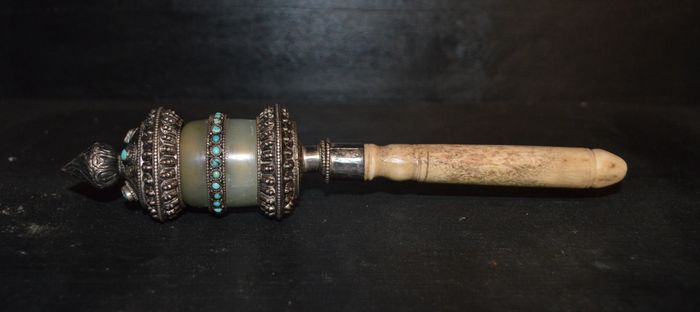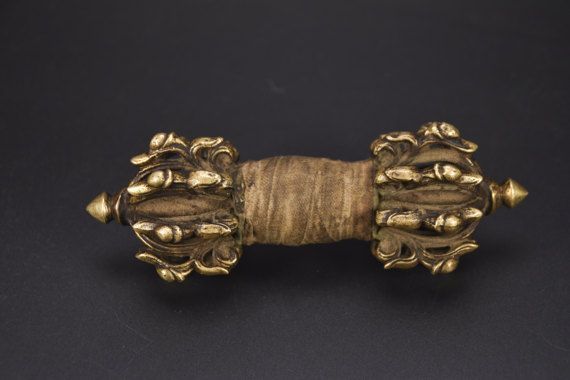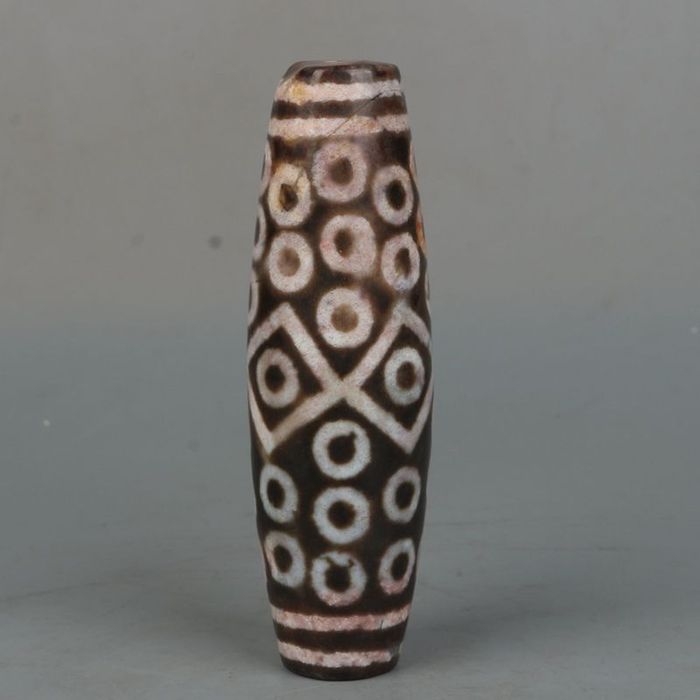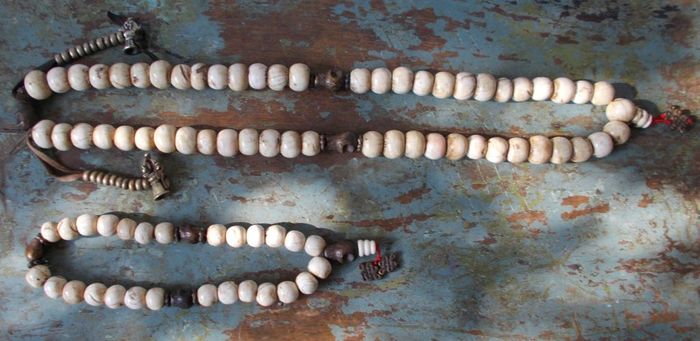By Sarah Orford - Asian Art & Buddhism Expert
We all recognise the Buddha sculpture when we see one, and most of us have come across a prayer wheel or singing bowl now and then, but what is their purpose and what do they symbolise? Our expert explains the function and symbolism behind five interesting Buddhist artefacts.
1. Buddha Sculpture
The Buddha statue is probably the best known and most commonly used Buddhist artefacts in the Western world, often depicted in a sitting position. When Buddha’s hands placed on his lap, the pose is called the Dhyana Mudra – "the gesture of meditation". Other Buddha poses are the Varada Mudra, signifying compassion and generosity with the fingers of the right hand pointing downwards, and the Dharmachackra Mudra, symbolising the wheel of the teaching of the Dharma (Buddhism) with the thumb and index finger of both hands touching to form a circle. The Mahaparinirvana Sana is a reclining Buddha, symbolising his last moments of illness just before Buddha reaches a state of enlightenment (Nirvana). It signals complete detachment from desires.

2. Prayer Wheel
There are many types and forms of prayer wheels in Buddhism: from the small Tibetan Mani one can carry to eight feet high wheels, to large racks of wheels like the ones you will find in the “Monkey Temple” (Swayambhunath) in Kathmandu. Prayer wheels contain rolls of thin paper or have a mantra such as “Om Mani Padme Hum” written on the outside of the wheel. Spinning the prayer wheel around and around sends your prayer into the universe.

3. Ghanta and Vajra
The Ghanta is a bell. Its hollowness represents wisdom and emptiness, while the sound it produces represents the voice of Buddha. The belt is mostly accompanied by the Vajra, a ritual thunderbolt also known as Dorje, which symbolises compassion and the destruction of unawareness. Moreover, Ghanta represents masculinity and is held in the left hand, while Vajra stands for the feminine identity and is held in the right hand. Ringing the bell can be a request for protection, it can represent the sound of Buddha in meditation, it can be used for visualisation while chanting, and much more.

4. Prayer beads
In Buddhism, mantras such as “Om Mani Padme Hum” are repeated hundreds, thousands of times during the day. To keep count, Buddhists use prayer beads or malas. A rosary of beads not only helps to memorise the number of mantras one has chanted or silently recited, but the rhythmic counting of beads also contributes to focus and calm the mind. At our Buddhism auctions, you can find many different and beautiful prayer beads from various parts of the world. The most common type of Tibetan mala is a string of 108 beads: designed for one hundred mantras, plus eight to spare in case of miscalculation.


Left: Mala, Right: Prayer bead
5. Singing bowls
It is said singing bowls date back as far as 2500 years, during the era of the historical Buddha Shakyamuni (560-480 B.C.). Today they are used in meditation, health care and religious traditions. The sound of a singing bowl clears the mind, which is why it is used as an aid in meditation to invoke a deep state of relaxation. In Buddhism, up to 12 different types of metals are used with copper being the primary material due to its pure sound. Different singing bowls produce different tones, stimulating different chakras.
Whether you are in need of a singing bowl to deepen your meditation or wish to add some prayer beads to your collection, take a look at our Buddhism Auction (pre or post-1950), where you will be enlightened by our changing weekly selection.